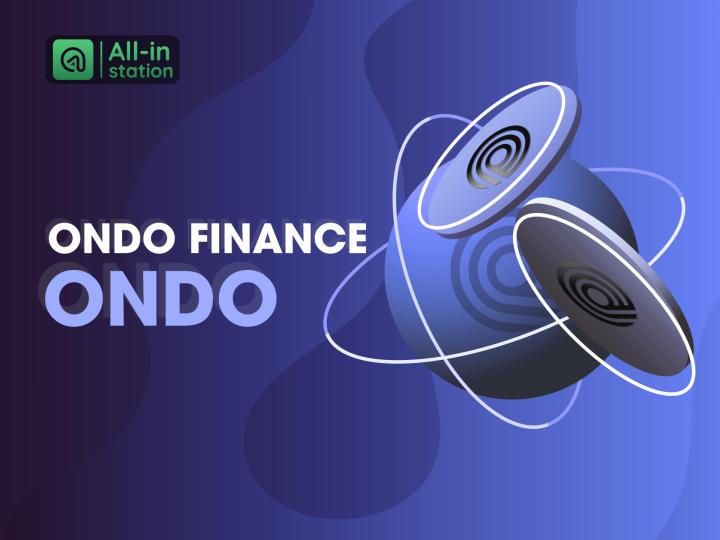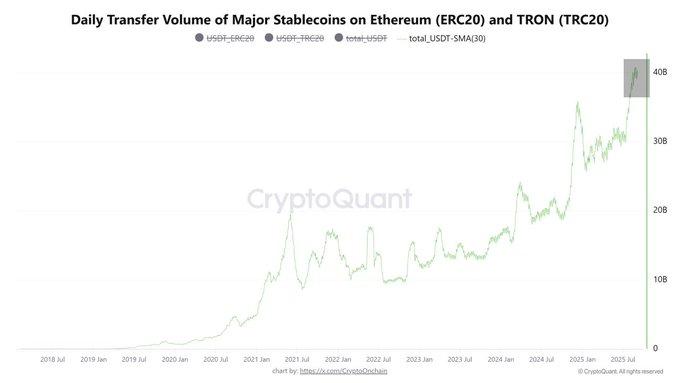The previous article discussed the views of the East and West on the market from a first-level perspective. Today, taking the opportunity of YZi Labs' announcement of investment in the Plume Network, a real-world asset (RWA) platform, I will talk about the changes I have observed in the RWA track recently.
This needs to be divided into four parts:
1. Whether RWA really has application scenarios, or in other words, product-market fit (PMF)
2. Which RWA assets are suitable for on-chain, and which are not
3. What were the previous solutions, and what are the current solutions
4. The recent trends in the RWA sector, and whether you have any perception of them
Let's start with 1 - Whether RWA really has application scenarios
Or in other words, PMF (excluding the stablecoin track of US Treasuries being on-chain, as Usual and MKR have already found PMF). Taking the on-chain of US stocks as an example, this is the most fiercely debated category on Twitter. Many people think that on-chain US stocks are redundant, as those who really want to trade US stocks already have their own channels, and any on-chain asset is more volatile than US stocks, so there's no need to play stocks on-chain.
I have a different view on this. I personally believe that US stocks on-chain have their significance.
1. In terms of channels - it's true that most of the big shots above A8 and A9 use platforms like Futu and FirstTrade for diversified investments in cryptocurrencies, stocks, and gold. But I believe that most of the retail investors in the circle don't have US stock accounts. On-chain US stock trading can at least open up their purchase channels without any threshold.
From another perspective, the total market value of stablecoins like USDT/USDC is getting larger and larger, which is another way for the US dollar hegemony to spread relative to traditional finance. If Crypto really achieves Mass Adoption through stablecoins + Payfi + smart wallet experiences like Alipay, do you think the Americans will be willing to let the rest of the world take over their US stocks? Most people in other countries around the world are more willing to go through the hassle of opening accounts with various banks and brokers to buy their own country's half-dead stocks, rather than simply placing one-click orders to invest in the world's number one economy like shopping on Taobao.
2. In terms of application scenarios, imagine this case: as a P-level investor, you've made $100,000 U in a few days by rushing to Mubarak, and you know that Tesla has recently halved, which is a good opportunity to buy the dips. You want to convert the $100,000 U into Tesla stocks.
Even if you have a US stock account, you first need to OTC the $100,000 U into fiat currency, transfer the fiat currency to the broker's account through the bank, and then start buying at the broker's end. This whole process will take 3-5 business days (back in 2017 when I was exposed to Bitcoin before, I bought US stocks through FirstTrade in Australia, and the SWIFT transfer alone took 4-5 days, plus a hefty fee of several tens of dollars). If Tesla goes up one day and you want to sell it and convert it to BTC or U, you have to go through this process again... Imagine if there were US stocks on-chain, you could instantly convert your Meme-earned U into Tesla, the reduction in friction cost is not just a little bit, but a 10x or even 100x improvement in user experience.
Then let's talk about 2 - Which RWA assets are suitable for on-chain
Similarly, T-Bills, which have already proven themselves, are not up for discussion. For other RWA assets, it really depends on who the target audience is.
For the C-end, stocks are undoubtedly the most suitable. Most retail investors are unlikely to have exposure to primary private equity, and if you Tokenize the equity of an unlisted company, I doubt many people would be able to understand it, let alone buy and hold it long-term. There are also things like the private credit collateral on Centrifuge, such as bridge loans in the real estate market and corporate receivables, which are similarly unsuitable for the C-end. The vast majority of C-end users should only be familiar with stocks. More C-end scenarios should be about using the chain to open up purchase channels for users who previously had no access to an asset, a process from 0 to 1.
For the B-end, there are many more things that can be Tokenized, but compared to the 0 to 1 for the C-end, the B-end should be more about reducing friction from 1 to 100. Just as primary private equity was already circulating among some institutions and high-net-worth investors, the bridge loan collateral on Centrifuge is likely to be lendable by banks. It's just that the circulation process is relatively cumbersome and the friction is greater. Putting it on-chain is like Payfi to Swift, which can greatly enhance user experience and flow speed.
Speaking of which, I remember discussing an RWA project last year, whose parent company was one of the top asset management firms in the US. They plan to issue Tokens representing the primary equity of their clients, such as SpaceX, on their own trading platform, so that the Tokens can be easily circulated and traded, and settled in one go when SpaceX goes public. So for the B-end, in addition to the trading users being limited to institutions and enterprises, the issuers are also relatively limited, just like the example above. Unless you already have a large amount of SpaceX equity under your own asset management, as a pure STO or RWA platform, you want to attract SpaceX equity holders to issue Tokens representing SpaceX equity on your platform, which involves a lot of friction in terms of resource cooperation, legal terms, and so on.
There are also many intermediate states that can be both C-end and B-end, such as the IP on-chain like Story Protocol, or the royalties of a novel, the box office of a movie, the sales of a game, etc. These things seem to be still in the early exploratory stage, and need to be tried and falsified one by one. Like influence Tokenization, FT failed, Kaito was relatively successful. Celebrity time Tokenization, http://Time.Fun was hot for a few days and then disappeared... These things need to be taken slowly.
Next is 3 - What were the previous solutions, and what are the current solutions?
Still taking US stocks as an example - the previous solutions were mainly synthetic assets, represented by SNX, Terra's Mirror, and GNS.
This path has basically been falsified so far, and the above three platforms have also removed the synthetic US stock assets they had previously. There are two reasons for this: one is that people are not enthusiastic about the "fake assets" synthesized with stablecoins or native tokens (SNX, etc.), and you can see the volume comparison between BTC, WBTC, and SNX's SBTC to get a sense of it. Synthetic assets are really no better than WBTC-like "mapped assets" in terms of holding peace of mind. The second is that the SEC used to check on these platforms at the drop of a hat, and although synthetic assets are fake, the SEC doesn't need a reason to investigate you, so it's better to do less than more, and these platforms have all removed these synthetic US stocks.
Now that Trump is in office and the SEC chairman has changed, the regulation in this area is much better than the previous two years. I've seen two new solutions for on-chain US stocks.
One is to go the traditional compliant Broker Dealer route, where the moment the user buys the tokenized stock on the chain, it triggers the corresponding operation in the US stock market by the compliant Broker on the off-chain. The essence is the same as Robinhood placing orders, it's just that Citadel is "buying on behalf" in the stock market. The advantage is that the stock you buy is "real stock", or at least 1:1 truly backed by that Broker. The downside is that the trading time is completely tied to the stock market, and you can't trade 24x7 like Crypto. You also need to build trust in that Broker or platform. And when you sell, it will trigger a Taxation Event, where US citizens may need to submit tax-related forms, and non-US citizens will at least need to do KYC and the like, which is a hassle.
The second is Ondo Global Market's approach. From what I've read in their docs, they originally wanted to go the Broker Dealer route, but later changed to a stablecoin-like approach, allowing their cooperating or Authorized Issuers to directly issue tokenized stocks (just like Tether issuing USDT and Circle issuing USDC). The advantage seems to be more flexibility, and there may be a chance to break free of the US stock trading time restrictions, and settle through the Issuer at a certain time. The downside is that it's most likely only available to non-US users, US users can't use it. And there may be the issue of different CAs for the same stock issued by different Issuers (like the incompatibility of USDC from different chains), the specific details of which are not covered in the docs, as the product is not scheduled to launch until next year.
The last one is like Plume, a RWA platform that feels more like a Framework, which includes KYC/AML, data storage/execution, consensus, ZKTLS verification, etc. In theory, it can allow cooperating institutions to issue various Tokenized RWA assets here, which brings us back to the previous topic of "which assets are suitable for on-chain", no need to elaborate further
Finally, let's talk about the wind direction of 4 - RWA in the past few months, have you noticed it
If you have been observing, the wind of RWA has been blowing quite strongly in the past two months. I'll just mention a few "news" that I've observed
1. The Ondo plan mentioned above plans to launch the Ondo Global Market, an on-chain stock market, at the end of the year or next year, and Ondo has recently been getting very close to Trump's WLFI, and there will be cooperation
2. Sui has also been leaning on WLFI recently
3. Frax is actively embracing Cedefi, and has recently launched frxUSD, which is a collaboration with BlackRock+Superstate
4. Ethena released a new product today called Converge - focusing on one of the two scenarios they believe are the most important for blockchain - Storage and settlement for stablecoins and tokenized assets
5. AAVE plans to issue a new token called Horizen, which has caused a huge stir in the community, and Stani personally came out to clarify - "The Horizen plan aims to fill the gap in AAVE's current RWA business segment, and the plan is expected to surpass the revenue of AAVE's current business lines in 5 years"
6. The Financial Services Commission of Korea plans to allow corporate entities to engage in virtual asset trading in phases, with a release scheduled for February 2025.
From my friends in the Korean circle, I learned that Korea may restart the STO (the previous term for RWA) plan. You see, allowing "corporate entities to trade virtual assets" is certainly not for you to speculate on coins, but to tokenize some real financial assets into "virtual assets" for circulation between companies
7. YZi Labs officially announced today that they have invested in the recently hot Plume Network RWA platform
These news form a Momentum, and we can't just turn a blind eye to it, so my current view on the next main track of Circle is PayFI+RWA+a Web2.5-like Consumer APP, as for AI+Crypto, I can only say there is hope, still in the talking+observing stage. After I finish the next piece "Some things worth mentioning on ETH and Solana", I will write a separate piece on my recent thoughts on AI+Crypto as the fourth part of this collection
Welcome to join the official BlockBeats community:
Telegram subscription group: https://t.me/theblockbeats
Telegram discussion group: https://t.me/BlockBeats_App
Twitter official account: https://twitter.com/BlockBeatsAsia








